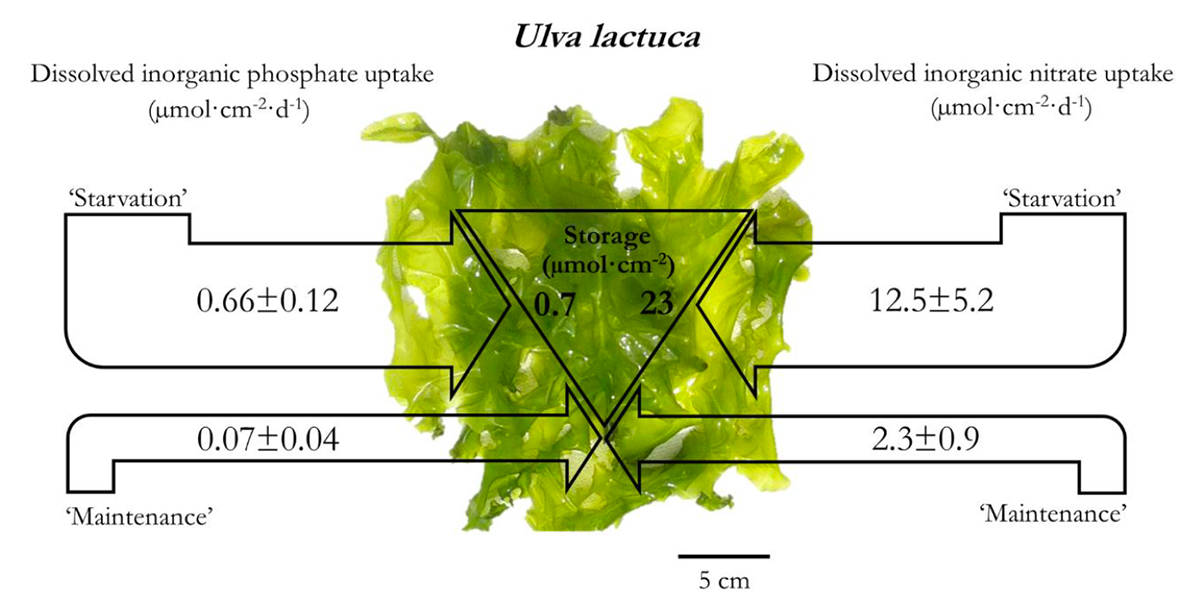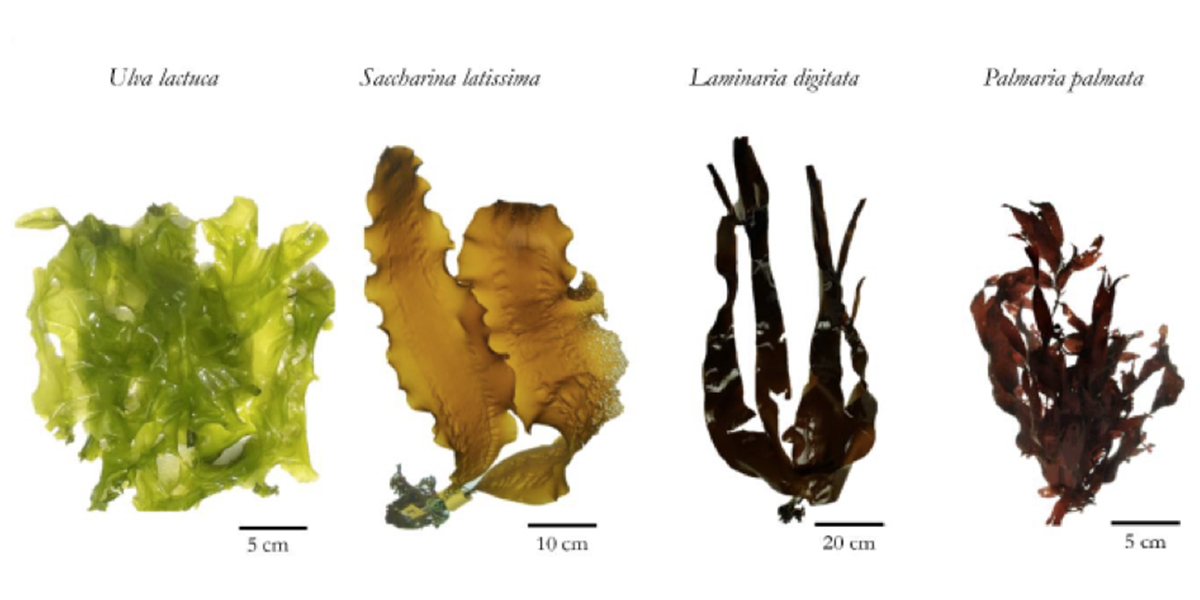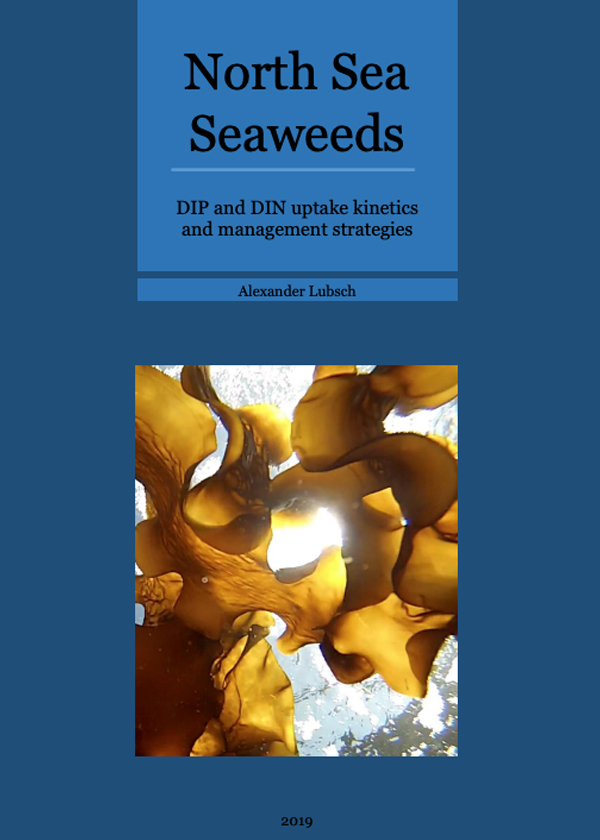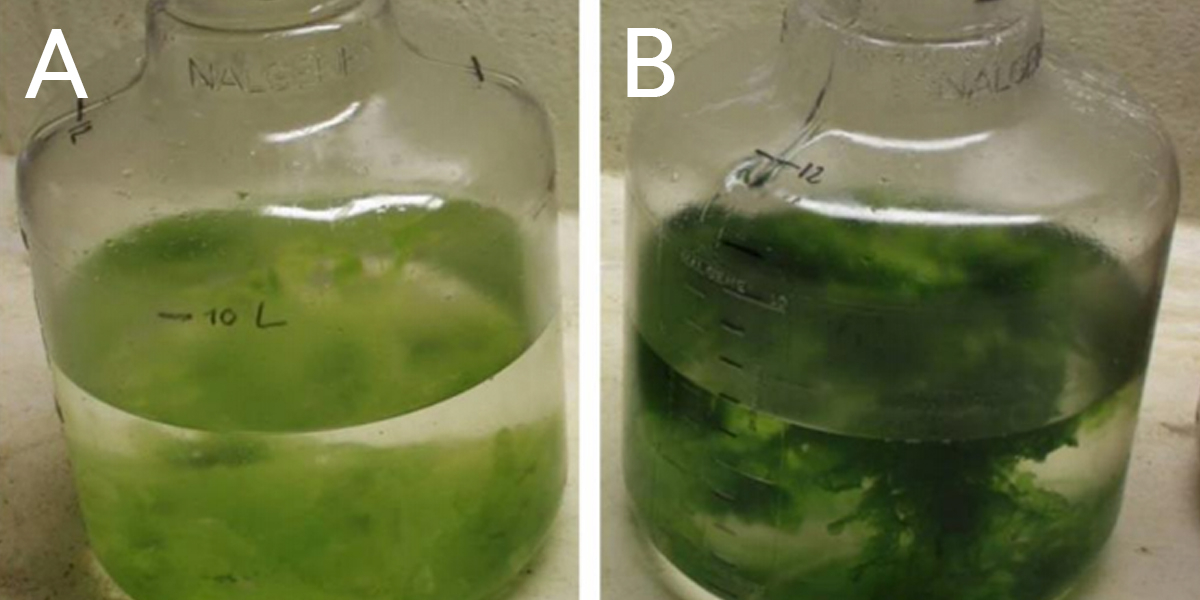Ulva lactuca (Chlorophyceae)
Seaweeds are important primary producers. An essential macronutrient for maintaining the metabolism and growth of these autotrophs is dissolved inorganic phosphorus (DIP), along with nitrogen (N). Understanding the demand and management strategy for nutrients by seaweeds is economically and ecologically of central importance as it allows for optimal manipulation in cultivation and biofiltration facilities, as well as it opens opportunities to forecast ecological impacts of nutrient limitation and shifts in limitation from one element to another, which can significantly affect the internal composition, physiology and growth of seaweeds.

A promising species
Ulva lactuca (Linnaeus), a seaweed in the division Chlorophyta, is found worldwide and is prolifically abundant where nutrients are readily available. Ulva lactuca has been identified as a promising species in water treatment facilities (biofilters) and in integrated multi-trophic aquaculture (IMTA) systems It is also recognized as a promising species for commercial mass cultivation and subsequent production of food, animal feed and fertilizer. Only a few studies have examined DIP-uptake kinetics and internal DIP-storage capacity in seaweeds in general and in Ulva lactuca, in particular.
The majority of studies related to the efficiency of N and P removal from seawater by Ulva lactuca have been conducted under field conditions. For example, indicated finding an optimal combination of biomass and water flow rates for satisfactory nutrient uptake by Ulva lactuca, by measuring DIP removal from the effluent in a small-scale water treatment facility. Quantification of DIP uptake kinetics over time, however, and the saturating storage capacity of DIP in Ulva lactuca has not yet been studied. In addition, uptake kinetics are usually expressed as functions of either fresh weight (FW), dry weight (DW) or surface area to volume (SA:Vol), which makes it difficult to compare data accurately without conversion.
Study
In this study, we present the DIP-uptake kinetics of Ulva lactuca exposed to a range of nominal PO4 3- concentrations (1 – 50 µmol·L-1 ). This range of concentrations is equivalent to exposing Ulva lactuca to phosphate concentrations of 0.02 – 0.67 µmol·cm-2 , which is within the range 29 of natural concentrations. The experiments were performed under laboratory conditions, controlling for temperature, light and hydrodynamics in a 'pulse-and-chase' (i.e. add a pulse of nutrients and follow their removal from the water over time) approach over 10 days.
DIP-uptake kinetics and storage capacity were quantified, as well as N:P-uptake dynamics, and all were standardized for SA. In order to make comparisons possible with other standardizations, we calculated factors for conversion to fresh weight (FW) and dry weight (DW).
Results
The results of this study are published in:
Lubsch, A. & Timmermans, K.R. 2018. J. Phycol. 54: 215-223. DOI: https://doi.org/10.1111/jpy.12612


